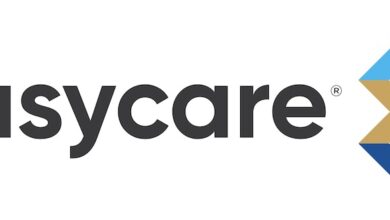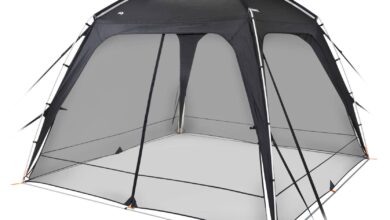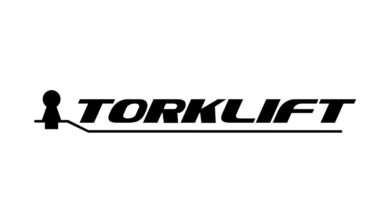The Faster, Easier, Better Way to Service Profitability
RV service sales are dependent on these three interconnected, incredibly dynamic conditions.

The following three components are of utmost importance in contributing to the profitability of an RV service department:
- The ability of the service advisor to complete a thorough write-up, including a walkaround, a menu presentation with a value statement, a multipoint inspection, a complete description and review of the customer’s concerns, and dedication to the repair order process combined with the consistency to do this with every single customer.
- The speed and skill level of the technicians to accurately triage the rig and prepare a complete estimate to service and repair it in a timely manner.
- The availability of the repair facility (aka, your dealership) to schedule appropriately to meet customer demand while balancing shop load.
Oh, and wouldn’t it be nice to make a profit while doing it?
These three components – advisor service sales skills, immediate triage and proper scheduling – are the cornerstone of profitability. And when we go into a dealership, typically there are several clues when it’s not being done properly.
Tell me if this sounds familiar:
- There are multiple rigs being stored on your lot until you have a chance to get to them. Multiple.
- Customers are calling you angry because “my trailer has been there for four weeks, and nobody has called me.”
- Customers are calling you angry that they “can’t get in for four weeks.”
- Technicians are being pulled from one job to the next to help put out the heat and everything is taking longer than you thought it would.
- Your SOP (standard operating procedure) storage is not a few shelves in parts anymore. It now occupies a full work bay because you’ve run out of room in parts.
These are just a few of the out-of-line conditions we typically see when we enter a dealership (that is struggling to make a profit), for the very first time.
One solution is to apply what I like to call the “FEB Principle” (Faster, Easier, Better) to the previous three components and see if we can change the outcome for some of the conditions you may be experiencing right now, especially in the busy season.
If we were better at write-up, would we be faster at repair? The faster part of this principle comes in the form of the advisor-service-sales process and the initial customer contact.
First, ask yourself, do you have a write-up process? In many stores, we find that while there might be a process, it isn’t the one you thought it was. When was the last time you observed a write-up?
If you have a write-up process, is it being followed? Are the advisors taking the time to complete a thorough write-up including a walkaround, a maintenance menu presentation and an explanation of the multipoint inspection? Are the advisors guiding the customer through the repair order cycle or just telling them “We’ll call you later”?
The key to making the repair cycle faster is a proper write-up followed by immediate dispatch for triage, so the advisor can contact the customer quickly and deliver the results.
In the write-up, it is imperative that the advisor set expectations and describe the repair order process to the customer so there are no misunderstandings. When the advisor tells the customer “I’m going to get my triage technician on this and get an answer back to you right away,” it’s a commitment to get this RV through the shop faster.
Who is the triage technician and how soon is “right away”?
The triage tech is typically a senior technician or any technician with advanced skill sets in the trades and can inspect, diagnose and recommend a repair in short order.
What is short order you ask? Twenty-four hours.
If you can get your team in the habit of inspecting, diagnosing and recommending repairs as fast as possible (24 hours), you won’t have rigs waiting at your shop for three or four weeks (or longer) taking up space, and you’ll be fielding less phone calls from angry or upset customers. Wouldn’t this make the repair order cycle easier?
Remember the write-up process? It’s critical to train the advisor to provide the customer with a reasonable timeline and manage their expectations to give you enough time to inspect the rig and recommend repairs.
If I want the customer to have a faster and easier repair event experience, you need to make sure that the write-up process is implemented and being used and that you have structured your shop so that you have a designated triage technician who can inspect the rig and diagnose it quickly.
Possible conditions affecting implementation of the triage tech process are: you might be a smaller store, or there is a lack of trained technicians; maybe your personnel lacks ongoing training (advisor and technician); possibly a poor or nonexisting write-up process; lack of special tools required to diagnose concerns; missing or misused scheduling tool; poor communication skills; and lack of awareness.
All these conditions can be corrected. First, you must identify the out-of-line condition, observe the process being used and develop an action plan. Then train, coach and monitor your team for results and follow up on your expectations.
Finally, we have the last element of the FEB, scheduling. Better scheduling leads to happier customers and profitable shops. The first rule of scheduling: The schedule belongs to the shop and not the customer.
In stores that have scheduling issues, typically there are multiple people answering the phone who have not been trained (just because you own a phone does not mean you know how to use it in a business environment), and that means everyone makes appointments.
Many times, this leads to appointments without consideration of the schedule or the shop load and will lead to unpleasant or difficult conversations with the customer. When people are trained to answer the phone and load the schedule, there are very few “hard” conversations.
No one wants an angry or disappointed customer. To correct this condition, we need to go all the way back to the sale and work forward from there. Here are three things you can do to correct scheduling problems.
- Train the customer from the point of sale on how your service department works and introduce them to service (otherwise known as a handoff). When the customer understands how scheduling works in your store, they will be easier to work with (in most cases).
- Get out of the habit of “Store to Inspect” and get into the habit of “Triage and Order.” It’s much easier to continue working on rigs in the shop that have parts ready for installation and space allocated for the repair.
- Train everyone who answers the phone how to use the phone, how to read the schedule and how to maximize availability. Phone training is the No. 1 training activity we complete whenever we go into a store because it affects everything else. The schedule is a shop management tool not a customer managed tool.
If we manage the schedule properly, we will be working on rigs that are ready and not bouncing from RO to RO (repair order) because we are dealing with heat all day. Which sounds better? Firefighter or fire preventer? We can all agree that it’s much better to be the fire preventer.
These are the three ways to start delivering the FEB Principles to your customers. Action is better than the alternative, which is hoping things will change. Identify the condition preventing you from achieving your goals, use the FEB Principles to decide which fits your situation, implement change as necessary, and then train, coach and monitor for results.




